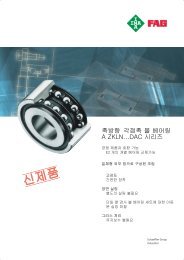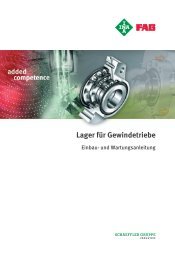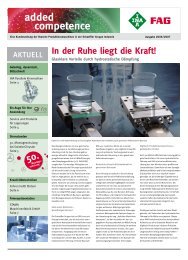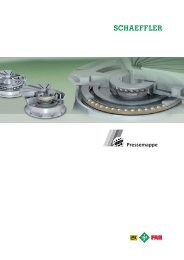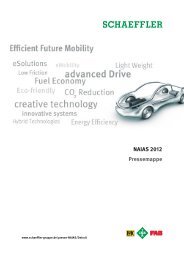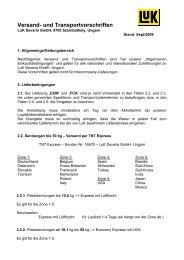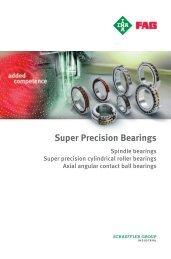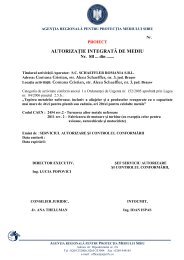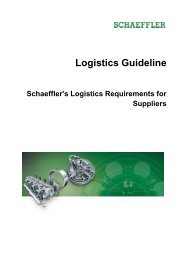Create successful ePaper yourself
Turn your PDF publications into a flip-book with our unique Google optimized e-Paper software.
LuK has studied a number of possible versions<br />
<strong>and</strong> configurations for active support with the<br />
following development goals:<br />
• Self-contained, easily adaptable unit<br />
• Low interface requirements (add-on)<br />
• Function independent of other components<br />
(e.g., combustion engine)<br />
• Differentiation from clutch-by-wire<br />
• Maintaining a direct connection between<br />
clutch <strong>and</strong> pedal<br />
These requirements are met in the electrohydraulic<br />
CSA (<strong>Clutch</strong> Servo Assistance) <strong>system</strong><br />
developed by LuK. This is a pump unit driven by<br />
an electric motor positioned directly between<br />
the slave <strong>and</strong> master cylinder (Figure 26).<br />
Figure 26 <strong>Clutch</strong> servo assistance (CSA) – arrangement in<br />
the overall <strong>system</strong><br />
This unit consists of an electric motor, electronics<br />
<strong>and</strong> hydraulic <strong>system</strong>. The electronics are for<br />
monitoring only <strong>and</strong> protect the <strong>system</strong> from<br />
overload (temperature, current). They are not<br />
required for the actual function of the unit.<br />
The hydraulic <strong>system</strong> (Figure 27) consists of an<br />
internal gear pump, a regulating valve <strong>and</strong> a<br />
LuK SYMPOSIUM 2006<br />
Figure 27 Hydraulic <strong>system</strong> of the CSA<br />
<strong>Clutch</strong> <strong>and</strong> <strong>release</strong> <strong>system</strong> 2<br />
safety valve, which ensures clutch operation<br />
under all conditions.<br />
The <strong>system</strong> has five possible operating modes:<br />
Sleep Electronics <strong>and</strong> electric<br />
motor not powered<br />
St<strong>and</strong>-by Electronics powered, electric<br />
motor not powered<br />
Pump turning Regulating valve open<br />
Pump turning Regulating valve at<br />
operating point<br />
Emergency Safety valve operation<br />
The <strong>system</strong> is in sleep mode when, for example,<br />
the ignition key is out. In this state, the entire<br />
<strong>system</strong> is inactive <strong>and</strong> without power. The <strong>system</strong><br />
therefore has no energy requirements <strong>and</strong><br />
no functionality.<br />
When there is a possible intention to operate,<br />
the <strong>system</strong> is in st<strong>and</strong>-by mode. This state may<br />
be defined by the presence of the ignition key<br />
in the ignition. The electronics are now active,<br />
but there is still no power to the electric<br />
motor.<br />
If the clutch pedal is operated from st<strong>and</strong>-by<br />
mode, the pump is driven by the electric<br />
motor. Up to a freely definable pressure<br />
threshold pS in the <strong>release</strong> <strong>system</strong>, there is no<br />
support, since the regulating valve is preloaded<br />
by a spring. The control edge is still<br />
completely open <strong>and</strong> the pump cannot build<br />
up pressure.<br />
When the pressure threshold pS is exceeded,<br />
pressure-proportional support is generated <strong>and</strong><br />
the <strong>release</strong> <strong>system</strong> is divided into pressure<br />
ranges: high pressure (pslave) <strong>and</strong> low pressure<br />
41



